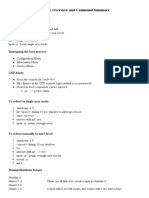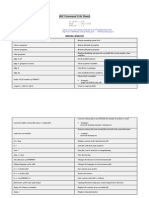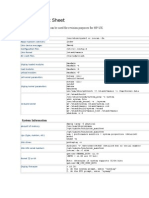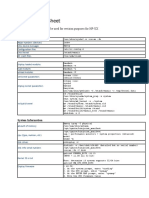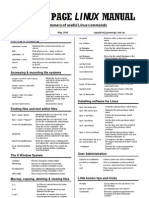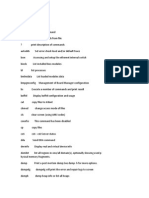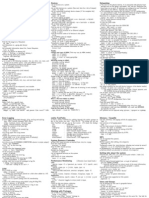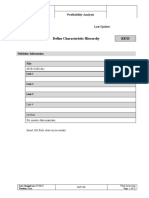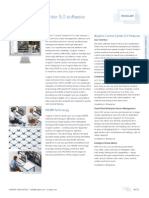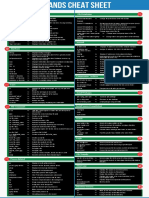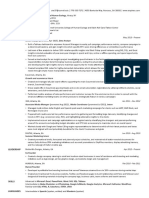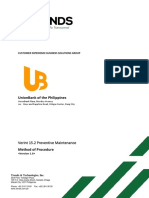0% found this document useful (0 votes)
148 views21 pagesUnix Commands
To summarize the key points:
1. Various commands are provided to view FC HBA device files, topology, driver version, and link statistics. This includes ioscan, fcmsutil, tddiag, and tdlist.
2. Umask values determine file and directory permissions. Common values like 022 create files with 644 permissions and directories with 755 permissions.
3. Cron jobs are scheduled tasks defined in the /etc/cron/crontabs directory. Commands like crontab are used to edit, list, and remove cron jobs.
Uploaded by
Dagz SuarezCopyright
© © All Rights Reserved
We take content rights seriously. If you suspect this is your content, claim it here.
Available Formats
Download as TXT, PDF, TXT or read online on Scribd
0% found this document useful (0 votes)
148 views21 pagesUnix Commands
To summarize the key points:
1. Various commands are provided to view FC HBA device files, topology, driver version, and link statistics. This includes ioscan, fcmsutil, tddiag, and tdlist.
2. Umask values determine file and directory permissions. Common values like 022 create files with 644 permissions and directories with 755 permissions.
3. Cron jobs are scheduled tasks defined in the /etc/cron/crontabs directory. Commands like crontab are used to edit, list, and remove cron jobs.
Uploaded by
Dagz SuarezCopyright
© © All Rights Reserved
We take content rights seriously. If you suspect this is your content, claim it here.
Available Formats
Download as TXT, PDF, TXT or read online on Scribd
/ 21

